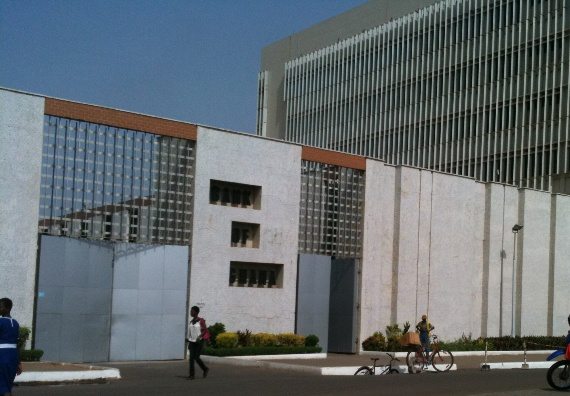
The governor of the Bank of Ghana, Dr. Ernest Addison, has admitted laxity on the part of the central bank in reckoning the true level of Non-Performing Loans (NPLs) in the banking sector.
Contrary to earlier reports that put the banks’ NPLs at about 18 percent, a special asset quality review of the banks conducted by the central bank showed that NPLs within the banking industry are higher than earlier envisaged–at about 22 percent.
The 22 percent NPL rate means that for every GH¢1 given out as loan by the banks, close to 22 pesewas has gone bad; that is, it is difficult to retrieve the monies from borrowers.
According to the bank’s latest summary of macroeconomic and financial data, the NPL ratio rose from 19.8 percent in April this year to 21.7 percent in May.
Speaking at the announcement of the monetary policy rate on Monday, Dr. Addison conceded that it had in the past not been tough on its regulatory function thereby allowing some banks to cover-up their classification of loans.
“I think the issue of the special asset quality review revealed that the banks were not properly classifying their loans. Going forward, we are hoping that the proper classification will be done so that we are on top of the issue of the loans that are performing and those that are not.
If we are not properly classifying our loans then our ability to supervise and monitor will be compromised, so we had to undertake a special exercise to ascertain the situation on the ground. We don’t want to be in a situation where we are suddenly confronted by numbers that we didn’t know existed.
“Yes, the regulator wasn’t tough enough but going forward we’ll be tough,” the governor told the media.
Following the Asset Quality Review (AQR), the Bank of Ghana has been implementing a roadmap for recapitalization. Banks which did not meet the minimum capital adequacy ratio have been asked to submit capital restoration plans to the central bank as part of the process.
The implementation of the roadmap, Dr. Addison said, is on course. “Most of these banks have met the minimum requirement and a few are on course to doing so within the stipulated timeframe,” he said.
NPLs and lending rates
The high NPLs has been blamed as the reason why lending rates on the market have been largely unresponsive to the favourable macroeconomic situation, which generally should see cost of borrowing go down.
According to the central bank’s latest report on average interest charged by commercial banks on credit, lending costs about 33 percent per annum.
And this high cost of credit, among other things could be as a result of the too many non-performing loans on the books of banks.
“The cause of the inertia is the level of the non-performing loans – 21 percent. This means that about 80 percent of the portfolio has to do the work which mean that the banks’ ability to drop the rate on the remaining 80 percent becomes difficult. And this explains why the resolution of the NPL issue has become very important,” he said.
Government in May this year announced that it will soon issue a US$2.5 billion bond to offset energy sector debts owed the banks, a major factor in the high NPL ratio.
According to the Finance Ministry, proceeds from the energy sector levies currently being paid by consumers of petroleum products, will be used to pay back the bond without recourse to the public debt.
The governor expressed confidence that the energy sector bond issuance will help address some of those energy sector-related NPLs in the banking system and could help bring the lending rates down. – B&FT



